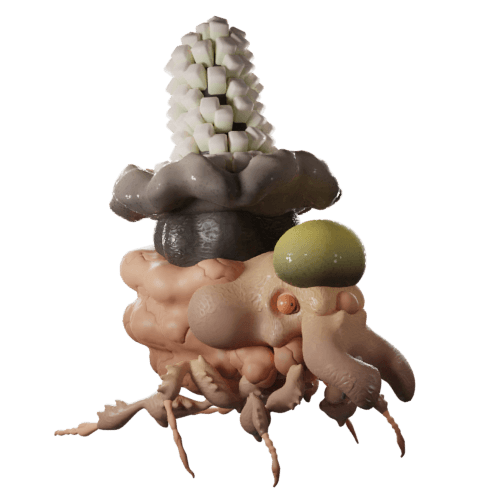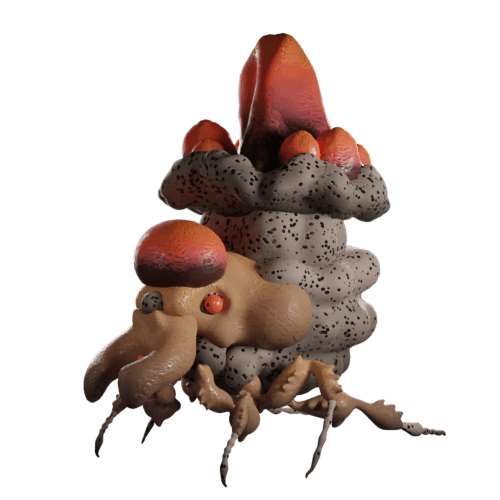Zoanthus Flea
CID S-25
Subspecies Gallery

Coppingeri
Salt Pools CID SS-65
Odor
- Primary
- Bo
- Hint
- Ge
- De
- Sp
- Chirality
- Temperament
- Neutral
The salt crystals on its back are actually its eggs. This subspecies lays more eggs, but smaller young with less chance of survival than its counterparts.

Pulchellus
Vent Fields CID SS-66
Odor
- Primary
- Fr
- Hint
- Sp
- De
- Ro
- Chirality
- Temperament
- Neutral
The lava-rock-like eggs at the base of its “volcano” are larger than the eggs of its counterparts. As a result, there’s less of them, but the offspring are larger in size with a better chance of survival.
Species Data
Classification
- Average Size
- 200 x 245 x 267 cm
- Trophic Level
- Predator
- Habitat
- Terrestrial
- Favorite Treat
- Meat Chop
- Nasal Cycle
- Left
Observations
The Zoanthus Flea should not be underestimated despite their strange appearance. These creatures are brutal predators, and they’re large to boot. Their hat-like appendage serves as a reservoir to store blood they suck from their victims. With fangs that are over a foot in length, I should add. The flea carries its eggs on the “nursery” structure located on its back. Once hatched, the young latch on and feast on the stored blood.